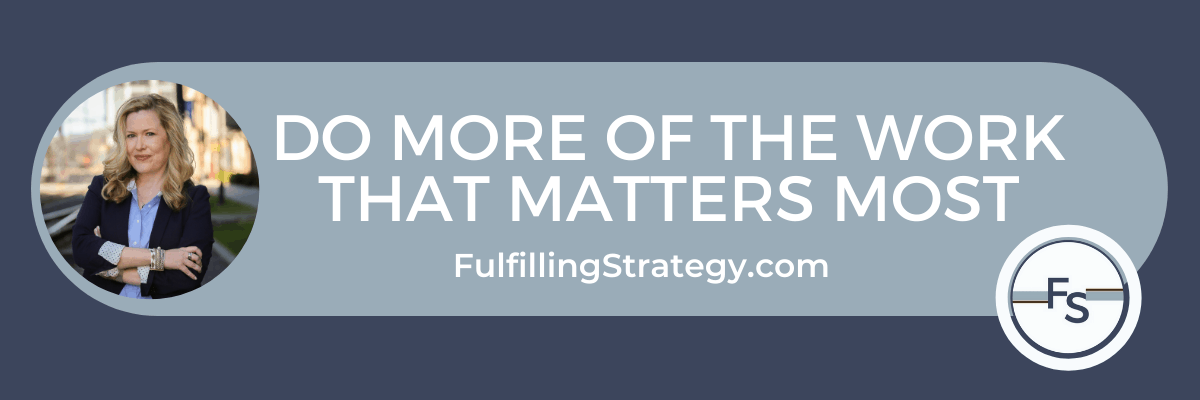STEPHANIE MITCHELL is the Founder and Principal Consultant at HighPoint Consulting Services, LLC, focused on helping small businesses create and execute sustainable marketing growth strategies.
Prior to consulting, Stephanie held various leadership roles in Marketing at companies such as TTI Floorcare and Newell Brands, in Charlotte, NC. In these roles, she focused on delivering growth strategies through new product development, innovation, marketing activation and other strategic initiatives.
I was in my fifth critically important meeting of the day when my phone vibrated with my child’s daycare number illuminated on the screen, my heart sank. Not again! This was the fifth call from daycare in two months confirming that I needed to pick up our 1-year-old because of a fever. Ok… quickly…reschedule my afternoon meetings – and probably tomorrow’s – and please no, not the day after! Any chance I can play rock-paper-scissors with my husband over text message? But I had a meeting with the management team that afternoon…I had to reschedule the last time. Wait a minute, my child is sick and needs me…where is my head?
This routine is all too familiar for many. Of course, there were easier weeks than others, but I needed a change, to find a better balance for my family and myself. So I did it, I quit.
Six months later, I tried my hand at consulting, providing both the flexibility that my family needed and the professional stimulation and experiences that I craved. Throughout this transition from the corporate world to independent consulting, I have gained extraordinary perspective and insight that will make me a more effective leader when I return to the office someday. I wanted to share my top 4 learnings from the last three years.
Lesson #1: Continue to Challenge Yourself
I am a competitive person by nature. I want my team to win, and I want my clients to win. When you work in a corporate environment, it’s easy to see who is doing a good job and what is considered a job well done by looking at what is celebrated – by your peers, management, or the leadership team. To stack yourself up next to your peers is a natural thing to do – so long it’s done in healthy doses – and easy to do when you’re surrounded by many individuals navigating the same hierarchical structure. While it has been nice to take a break from this for a while, admittedly, it was in those environments that I naturally challenged myself most. When taking professional personality indicator tests, I index heavily on growth and achievement – and leaving an environment where there were clear definitions of this, I found the need to deliberately find and work on projects that challenged me.
It comes down to definition. If a corporation is not around to define what success looks like for you then you must do it yourself! This is accountability – both professionally and personally in the context of self-employment.
Below are a few techniques that I have implemented along the way to ensure I both challenge myself and hold myself accountable for achieving success:
- Set your own goals and objectives both quarterly and annually
- Get an accountability partner and/or mentor that you meet with regularly
- Stay in touch with your work network (LinkedIn is a great platform for this!)
- Look to industry leaders for benchmarks and best practices
- Read and stay current on what’s happening in your field of expertise
Lesson #2: Continue to Invest in Yourself
Throughout my career I have been extremely fortunate to work for companies that greatly valued the learning and development of their employees. This was in part because they wanted to enhance the skills of their employees to increase effectiveness and productivity within their jobs, in turn making more effective leaders. Additionally, these employers genuinely cared about their people – their growth, development, and wellbeing. When you leave the corporate environment where there is a well-established learning and development infrastructure, you lose the access to a formal development curriculum. You must take it upon yourself to continue to invest in you!
Continuing Education
I’m not necessarily talking about going out and getting a master’s degree (though if that’s relevant to you, then do it!), what I’m referring to is the continuation of learning new things, tricks and tips…items that you can add to your ever growing tool belt. It is important to continue to learn and share best practices- but now it is more difficult since you must find it yourself.
It takes conscious effort to learn new things in a meaningful way. You must hold yourself accountable for answering the question, “What is something new that I have learned lately?” If the honest answer is “not much,” then it’s time to revisit and establish a revised self-development plan.
Equipment – Set Yourself Up for Success
Okay, here’s a more tactical one, but it’s extremely important – invest in your equipment and professional set-up. Holy smokes do I miss in-house IT support! Don’t get me wrong, I’m a resourceful person and can Google computer remedies like the best of them. But seriously, when shifting to consulting I had to sit down and really reassess the tools made available to me. Scratch that – the tools I had to make available for myself. Perfect example, I purchased the “cheaper” laptop initially and quickly regretted it. To set yourself up for success absolutely includes your equipment, but is often an afterthought.
Your equipment, whether it be hardware or software, enables you to get the job done quickly and effectively. Buy the software package that makes you more efficient, the laptop that you will love using and can easily navigate and use and the printer that actually works! Bet on yourself with this investment, I promise it will pay off greatly.
Lesson #3: Evaluate Workplace Efficiency
When I left the corporate world, it was absolutely mind-boggling realizing how much I could get done as an individual contributor outside of the office without the paralysis of a corporate routine. I immediately noticed that I was accomplishing more activity in a single hour than I was in what felt like an entire day at times in the past – mainly due to meeting overload. This led me to truly reflect and analyze various efficiency methods that I could apply both immediately in the short-term, and longer-term for future use when I return to the office. My observations relate to both flexibility in the workplace and intentional time-management.
I admit, the term ‘flexible work schedule’ was something I used to approach with skepticism. My hand is raised, it was me, and while I’m not proud of it, I’m only human. I guess I needed to experience this for myself to fully embrace the modern style of work. Boy did COVID change the traditional work environment, with many corporations adopting a flexible work policy, both with a variation of hours served and location in which they are served. Like we’ve read in so many articles recently about the changing work environment, largely driven by the pandemic, if you haven’t already – embrace the change, be open minded and adapt!
I’ve read books on time-management in the workplace (The One Minute Manager by Ken Blanchard and Spencer Johnson, Great at Work: The Hidden Habits of Top Performers by Morten T. Hansen, Deep Work: Rules for Focused Success in a Distracted World by Cal Newport) and have learned a few tricks that I have adopted and applied. While I’ve implemented a few of these ideas along the way, there are five tips in this area that will make us all more effective leaders in the future:
- Embrace the change, be open minded and adapt! (referring to workplace flexibility)
- Deliberately implement ‘no meetings allowed’ hours within the work week (it’s critical to be able to get uninterrupted work done)
- Empower your team with decision making at all levels
- Expect resourcefulness and a spirit of trust
- Flexible work notwithstanding, find a way to prioritize a sense of community to maintain positive team culture
Lesson #4: Be a Servant Leader that Serves Larger
This final insight is arguably the most important and has left the largest impact on my approach and attitude on how I work.
Sitting down with my first consulting client I wanted to not only deliver on what I said I would do, I wanted to exceed their expectations. I wanted to come up with ideas that were novel and unique. It was a true partnership in setting strategies, tackling initiatives that drove the largest ROI, generating ideas and recommendations six days a week and twice on Sunday. Not to mention, I was extremely lucky to be working alongside such a talented group of individuals. But I quickly realized that I needed to shift my mindset and relinquish control having now stepped foot into the service industry – and fast!
 Coming from the corporate world with responsibility over various business units and teams, I was comfortable making decisions or empowering my team to do so. As a consultant, you can recommend and guide, but ultimately you relinquish much of the decision-making power. Power maybe, but authority…maybe not. Okay, no problem, I can deal with that. But this pivot, this change really forced me to reflect on what it really means to be a “servant leader,” no matter the role. I always considered myself a servant leader – though it’s not something you can call yourself – but needs to be bestowed upon you by your peers, your team and those surrounding you. After reflection, I came to the conclusion that I used to serve “small.” Yes, I served my team – always ready to jump in the trenches alongside any teammate, ready to get my hands dirty and do the job alongside anyone else, willing to take the heat for a team member if we missed something and offer protection when necessary. Of course, I’ll continue to do all those things. But I had been missing out on the opportunity and need to serve much larger.
Coming from the corporate world with responsibility over various business units and teams, I was comfortable making decisions or empowering my team to do so. As a consultant, you can recommend and guide, but ultimately you relinquish much of the decision-making power. Power maybe, but authority…maybe not. Okay, no problem, I can deal with that. But this pivot, this change really forced me to reflect on what it really means to be a “servant leader,” no matter the role. I always considered myself a servant leader – though it’s not something you can call yourself – but needs to be bestowed upon you by your peers, your team and those surrounding you. After reflection, I came to the conclusion that I used to serve “small.” Yes, I served my team – always ready to jump in the trenches alongside any teammate, ready to get my hands dirty and do the job alongside anyone else, willing to take the heat for a team member if we missed something and offer protection when necessary. Of course, I’ll continue to do all those things. But I had been missing out on the opportunity and need to serve much larger.
It's one thing to sit through a corporate town hall and shake your head ‘yes' in agreement to what is being said, to be ‘on-board’ and sign up for the tasks at hand. It’s quite another to realize that your service is to not only your team, peers, and management alike- but also to the shareholders, investors, and the corporate mission as a whole. Seems obvious right? It’s not…especially when you’re head down in the day-to-day tasks trying to accomplish your key objectives with meeting overload, as discussed previously. It’s easy to be consumed by the daily demands and miss the company's mission and purpose. Having had time to sit back and truly grasp the full picture, it is the very service we provide to the mission of the company that will set one company aside from the other.
Taking the time to understand the identity, the true DNA of a company, is so critically important (especially to those who crave purpose) and yet can be incredibly challenging to cascade with meaning throughout an organization. My realization here is that one needs to deliberately and consciously think bigger and serve larger – and then act as a conduit to one’s peers, team, or anyone who surrounds you.
These four leadership lessons strongly resonate with me. Having embarked on my “corporate to consultant” journey several years ago, I can relate to Stephanie's insights, especially when it comes to servant leadership.
It's quite the shift transitioning from Doer to Guide. But what you lose in actual “power” to make decisions, you gain in perspective. This perspective brings with it the benefit of a wider lens of possibilities. By helping clients see the bigger picture and aim even higher, you get to serve larger.
I have the privilege of working with Stephanie on a regular basis. She is truly an exceptional leader and I am honored to have Stephanie share her wisdom with us here.
Work well,



